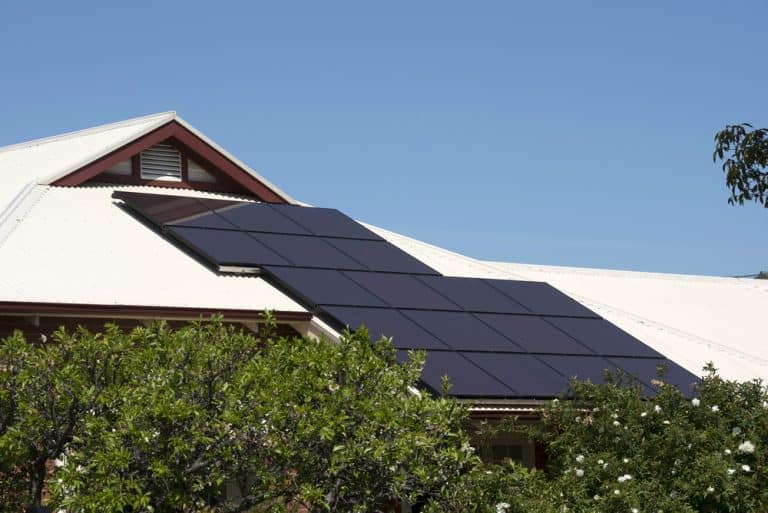Nevada Energy’s Storage Programs

Ever wonder what the big deal behind solar storage is?
Nevada is a booming state for solar. The problem is that solar arrays can’t store the power it generates.
The ideal solution would be to install battery backup, like the Tesla Powerwall. However, these storage options are expensive.
This is why many people have opted to stay connected to the grid. They then use different solar backup options to power essentials during an emergency.
The Federal Investment Tax Credit has made these backup options a viable option for many. However, with the NV Energy storage program, battery backup investors can save even more.
Nevada Energy Storage Program Terms and Conditions
In 2018, NV Energy expanded its renewable incentives with its storage program. This program, however, is not available to everyone.
Individuals need to be NV Energy customers who either have solar or are planning on getting it. This means that this credit only applies to individuals that also advocate solar.
This, however, isn’t the only thing that can affect this incentive. There are also certain types of customers that get more incentives than others.
NV Energy’s Program Priorities
One of the priorities for this program are customers with critical infrastructure. Critical infrastructure includes facilities like airports and hospitals. It also includes public safety facilities and public infrastructure facilities or dams.
These customers have priority over other customers. They also get larger incentives from NV Energy.
Battery Backup and Time of Use
Another way in which people might be able to get more from NV Energy is if they are on a Time of Use (TOU) plan. This payment option tracks when the customer uses electricity and then charges them based on when the electricity was used.
There are several different factors that go into the pricing for this payment option. However, for the most part, it has to do with supply and demand of energy in the area.
For instance, there may be a higher demand for energy in the evening because that is when people are home. Those on TOU would pay more for energy that is used during this time. However, they would also pay less than everyone else for the energy consumed in the mornings when no one is home.
TOU can be a good way to save money if the customer is conscious of when they use energy. For those that are also getting energy storage these savings are increased.
This is because energy storage helps decrease grid use during hours that have more demand. However, it is also because NV Energy gives a higher incentive to those with TOU.
Residential Storage Rebate Program
There are two categories in NV Energy’s storage program. The first is the residential rebate.
This rebate is for systems between 4 and 100 kW. For residential customers the payment plan the solar customer has opted for makes a difference.
Solar customers on TOU get the lesser of 50 percent of the project, $3,000 or 22 cents per watt-hour (Wh). Residential customers that have opted out of the TOU will potentially get less. This is because instead of possibly getting 22 cents per Wh they get 11 cents per Wh.
Commercial Storage Incentive Program
Commercial storage incentives go to systems that are between 4 kW and 1,000 kW. For Commercial customers, their options differ based on two variables. Whether they qualify for the federal investment tax credit (ITC) and if the system is a critical infrastructure.
Systems that qualify for the tax credit have the option of getting 25 cents per Wh. While those without the tax credit can get 35 cents per Wh.
Critical infrastructures that are eligible for the ITC can get 40 cents per Wh. While critical infrastructures that aren’t eligible for the ITC can get 50 cents per Wh.
All commercial systems get the lessor of its options. These options include the maximum on the reservation notice, the incentive payments listed above, 50 percent of the installation or the cap for the customer type. This cap is between $50,000 and $300,000 depending on the type of infrastructure.
Federal ITC in Conjunction with NV Energy Storage
The ITC is a dollar for dollar tax credit that is applied toward purchased solar arrays. However, this credit can also be applied to energy storage systems. They just have to be installed in conjunction with renewable energy.
Although Commercial customers with the ITC get less per watt from NV Energy, it doesn’t mean taking this route is a bad option. In fact, this credit actually accounts for a large portion of both solar and storage costs.
Another benefit of the ITC is that residential customers don’t get less from NV Energy for having it. These individuals get up to 30 percent off of the cost of installing solar/storage and qualify for utility incentives.
The only issue is that the ITC is set to phase out over the next couple of years. This means that if you want the best deal, it is better to get it now before this incentive decreases.



Send a Message
Oops! We could not locate your form.